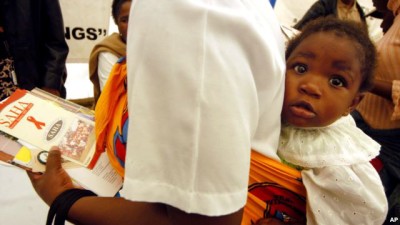
The tiny southern African nation of Botswana is leading the way in treatment and containment of the virus that causes AIDS. It is exceeding goals for addressing the HIV crisis, well ahead of a deadline set by the United Nations.
Botswana, with HIV infection rates of up to 25 percent of the adult population, has moved ahead of other countries — both Western nations and the economically disadvantaged — in tackling the AIDS epidemic.
The United Nations Program on HIV/AIDS has called on countries to strive to ensure that 90 percent of their citizens know their HIV status and that 90 percent are treated with ant-retroviral therapy to achieve 90 percent viral suppression.
A new report published in The Lancet HIV has found that Botswana is exceeding those goals, well ahead of a 2020 deadline.
Botswana has reached a viral suppression rate of 96 percent among its infected citizens, mostly between the ages 15-49, according to Max Essex, chair of Harvard University’s T.H. Chan School of Public Health AIDS Initiative.
The reason? Essex said the middle-income country has been open to letting in international AIDS researchers and clinicians to assist in the fight.
Botswana also started the battle early in 2001 with a goal of testing high-risk populations and making sure anti-AIDS drugs were available to people who needed them, even in remote villages.
“So you can’t say it can’t be done even in sub-Saharan Africa where there are very high rates of infection and where there’s not a lot of pre-existing number of physician AIDS specialists and that sort of thing,” he said.
Countries in the West, according to Essex, are lagging behind Botswana in the fight to suppress the virus that causes AIDS, reaching anywhere from 60 percent of their HIV-infected citizens in Europe and just 30 percent in the United States.
In the absence of a cure for AIDS, Essex said the U.N. estimates that suppression of the virus through identification and treatment could result in a dramatic drop in HIV transmission rates.
“In the way the World Health Organization set up those goals,” he added, “they stated that if all countries or the world could reach those guidelines by 2020, then within 10 years of that, rates of new infections should go down by 90 percent in the world.”
Botswana’s experience seems to show the validity of that approach, and Essex said he is optimistic that other countries will eventually catch up to it.
“It will certainly take other countries considerably longer to,” he said, “but I have no doubt that most countries can reach those goals if they want to and I certainly hope they want to.”
The hope continues for researchers to find an effective HIV vaccine to halt transmission.
Without that, Essex said reaching as many infected people as possible, and treating them with anti-retroviral drugs, offers the best hope of stopping the spread of the virus.
END

Be the first to comment